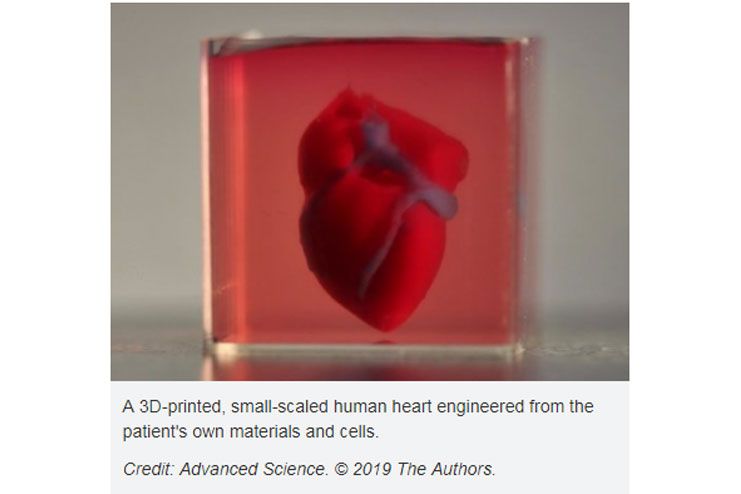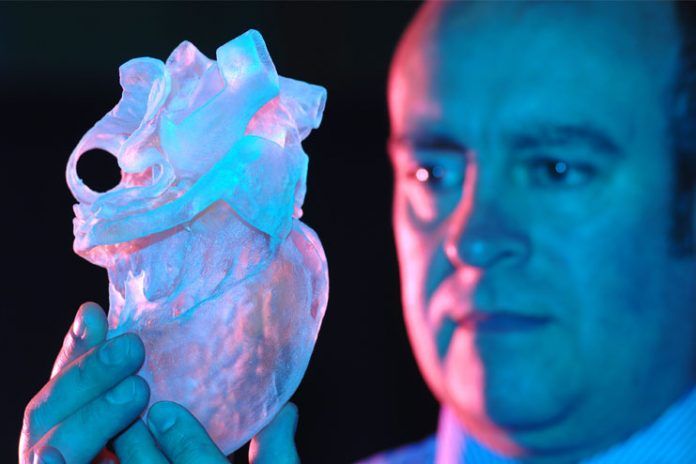Affiliate Disclaimer
Some links in this article are affiliate links. We may earn a small commission if you make a purchase through these links, at no extra cost to you. We only recommend products we find useful to our readersWith so many breakthroughs in the field of medicine, there is yet another addition to the existing list. Israeli scientists have engineered a fully functioning 3D vascularised heart, just from the biological materials of the patient itself.
A new study (R) conducted by the researchers from the Tel Aviv University have actually created a breakthrough in the medical history by “printing” which is believed to be the very first 3D vascularised heart which has been engineered using a patient’s own cells and biological materials. The finding of this study has recently been published in Advanced Science on April 15.


The field of regenerative medicine till now has been very successful in printing out simple tissues of the body without any kind of vascular support. This finding is believed to be nothing but a breakthrough in the field of medical history.
Prof. Tal Dvir of TAU’s School of Molecular Cell Biology and Biotechnology, Department of Materials Science and Engineering, Center for Nanoscience and Nanotechnology and Sagol Center for Regenerative Biotechnology, who is also the lead author of the study did suggest saying that this is the very first time that someone has successfully engineered as well as printed out an entire heart studded in with cells, blood vessels as well as the ventricles and the chambers in the heart.
The rate of increase of deaths because of heart disease in the United States is growing at an alarming rate. Currently in the medical field, it is just the heart transplant which is believed to be the only mode of treatment for the end stage failure of the disease. Given the fact that the number of heart donors across the world is very limited and less, it is important for the doctors and the researchers to find alternative ways to combat the situation.
Emphasizing how monumental this finding is, Prof. Dvir further stated that scientists priorly have successfully printed the structure of the heart and such but this is actually the very first time that the scientists have been successfully able to print a complete 3D vascularised heart. The Professor further said that the heart that they have reproduced has been made from the human cells and the patient specific biological materials. This is what is believed to serve as the bioink, the substances made out of sugar and proteins which is what helped in the overall 3D printing of the process.
The results from this specific study is believed to help demonstrate the potential for the approach of engineering the personalized tissue as well as organ replacement in the coming days.
The findings for this study for the engineering of the 3D vascularised heart are now small, resembling the heart of that of a rabbit. But, the same kind of approach and techniques are required for developing the human heart as well.
For successfully conducting the study, a biopsy of the fatty tissue was taken from the patients following which the cellular as well as the acellular materials were separated. Additionally, the cells were programmed to become pleuripotent stem cells in the body, the three dimensional extra cellular matrix consisting of collagen and glycoproteins were processed into a personalized hydrogel which is what served as the “ink” for the printing process.
Following mixing in the hydrogel, the cells undergone differentiation into forming the cardiac and the endothelial cells to help create patient specific immune compatible cardiac patches with complete vascularisation altogether.
The next goal of the researchers is to focus on culturing this printed 3D vascularised heart in the lab and then moulding them in a way to replicate the function of an actual heart. Following this, the researchers are planning on transplanting it to an animal model to check its impacts and functioning.
Prof. Dvir said that they are currently working to develop the heart even further. It is necessary for the cells to have and showcase the pumping capability. In the current model, the cells are contracting but further work needs to be done in this. The development of this first 3D vascularised heart is believed to be the first breakthrough in the future of organ printers in the finest hospitals across the world.































